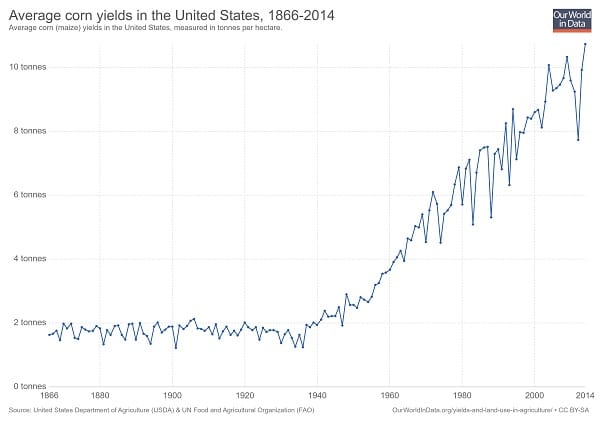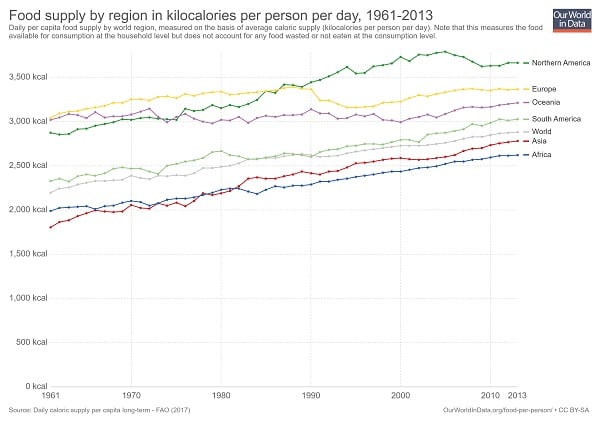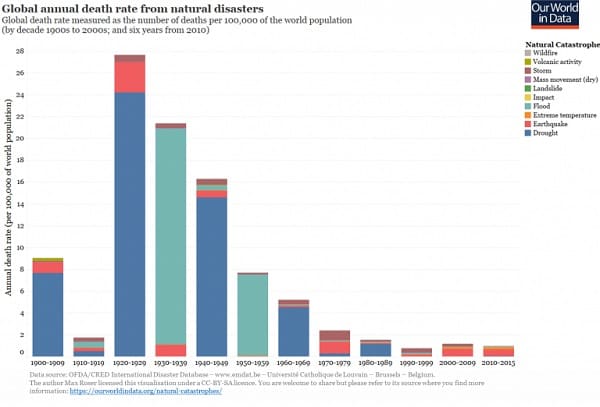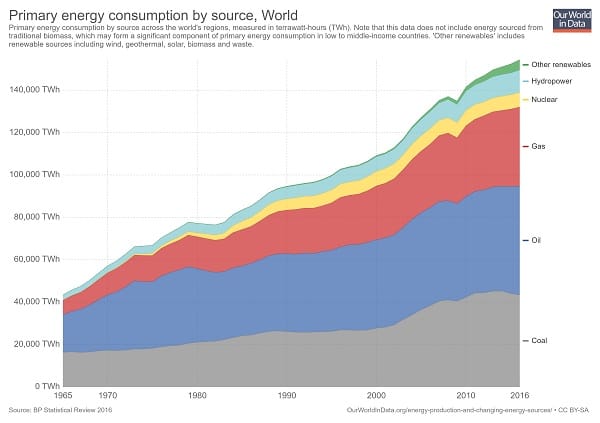Cheery News for the New Year: Our Increasingly Livable Climate

 According to University of Alabama in Huntsville atmospheric scientist Roy Spencer, “2017 ended up being the 3rd warmest year in the satellite record for the globally-averaged lower troposphere, at +0.38°C above the 1981-2010 average, behind 1st place 2016 with +0.51°C, and 2nd place 1998 at +0.48°C.” Based on earlier analysis by the National Oceanic and Atmospheric Administration (NOAA), that means:
According to University of Alabama in Huntsville atmospheric scientist Roy Spencer, “2017 ended up being the 3rd warmest year in the satellite record for the globally-averaged lower troposphere, at +0.38°C above the 1981-2010 average, behind 1st place 2016 with +0.51°C, and 2nd place 1998 at +0.48°C.” Based on earlier analysis by the National Oceanic and Atmospheric Administration (NOAA), that means:
- 2017 is the 3rd warmest year in the 138-year (1880-2017) instrumental climate record
- 2017 is the 41st consecutive year (since 1977) to be above the 20th century average
- All 17 years of the 21st century rank among the eighteen warmest on record
Climate warriors often cite such numbers in their narratives of planetary peril. However, human progress gallops on despite (or perhaps partly because of) recent warming. This post offers some cheery news for the New Year, drawn from the website Our World in Data.
Human Well Being in the Age of Global Warming
Global average land and sea surface temperature has risen approximately 0.8°C compared to the 1961-1990 average, and another 0.4°C since the end of the Little Ice Age in 1850. In other words, the world is now about 1.2°C warmer than in pre-industrial times.

We’re doomed, right? Not so much. Let’s start with life expectancy since 1950—roughly the period of anthropogenic global warming in U.N. Intergovernmental Panel on Climate Change (IPCC) assessment reports. During that period, annual global energy-related carbon dioxide emissions increased by roughly 500 percent and, as noted, the world warmed approximately 0.8°C. So, what happened to life expectancy during that period?
Globally, life expectancy increased by 54 percent, from 48.0 years in 1950 to 74.1 years in 2015. All regions made substantial gains. In Africa, the poorest continent, life expectancy increased by 68 percent.

Next, let’s consider deaths from malaria, a disease global warming will supposedly exacerbate by producing longer breeding seasons for the Anopheles mosquito. Africa is the region most vulnerable to malaria. During 2000-2015, annual deaths from malaria in Africa decreased by 48 percent, from 764,000 to 395,000.

What about crop yields? We often hear that global warming will soon depress corn yields. The data suggest otherwise. During 2000-2014, U.S. corn yields increased by 26 percent from 8.5 to 10.73 metric tons per hectare. Crop yields fluctuate from year to year in different countries, but in general, global yields in 2014 were higher than in 2000 for corn, wheat, rice, and soy.

Unsurprisingly, global food availability, measured in kilocalories per person per day, increased by 5 percent during 2000-2013, despite a 17 percent increase in global population. Improved yields were also chiefly responsible for reducing the share of global population that is undernourished from 15 percent in 2000 to 10.8 percent in 2015.

What else has happened in the Age of Global Warming? The share of world population living in absolute poverty, defined as living on less than $1.90 per day, declined from roughly 29 percent in 2000 to 9.5 percent in 2015, while global per capita GDP increased by almost 43 percent.


Last but not least from a climatic perspective, deaths per 100,000 population due to extreme weather are at historic lows. Note, in Figure 8, below, most of the natural disaster deaths during 2000-2009 and 2010-2015 are due to earthquakes.

The number of reported natural disaster events worldwide decreased by 51 percent from 526 in 2000 to 348 in 2016. That is remarkable considering the huge increase in the number of people potentially exposed to disasters during that period (global population increased by 21 percent).

Lest there be any confusion, I do not present the data above to belittle the challenges facing mankind. More than one billion people still have no access to electricity, hundreds of millions are still hungry and poor, and millions die each year from preventable diseases. But the trends are moving in the right direction, towards increasing health and material well-being.
Why Progress Continues
There are several reasons why living conditions keep getting better notwithstanding the real or alleged impacts of climate change. One is that the warming rate is gradual and fairly constant, not rapid and accelerating, as often claimed by climate campaigners. In other words, it’s not “worse than we thought,” it’s better than they told us.
For example, in the University of Alabama in Huntsville satellite dataset, the warming rate in the lower atmosphere has been a plodding 0.13°C per decade since November 1978—less than half the 0.27°C/decade forecast by the climate models underpinning policies like the Paris Climate Treaty and the Obama administration’s so-called Clean Power Plan.
A more fundamental reason is that increasing wealth and technological innovation make societies decreasingly climate sensitive. The chart below by University of Colorado professor Roger Pielke, Jr. illustrates the relative economic impact of extreme weather. Since 1990, a period during which more than 40 percent of all industrial carbon dioxide emissions entered the atmosphere, weather-related losses as a share of global GDP have declined by about one-third.

A great irony of the climate debate is that fossil fuels have been—and remain—the chief energy source supporting the economic and technological developments that make societies decreasingly vulnerable to climate-related risks. In 1990, fossil fuels—coal, oil, and natural gas—supplied 88 percent of global energy consumption. In 2016, fossil fuels supplied 86 percent—still by far the largest slice of the pie. More importantly, from 1990 to 2016, the absolute quantity of fossil-fuel energy consumed increased by 37 percent.

So, as fossil fuel consumption increased, the relative economic impact of extreme weather decreased. That relationship is causal, not coincidental. As energy scholar Alex Epstein puts it, human beings using fossil fuels did not take a safe climate and make it dangerous, they took a dangerous climate and made it safer and more livable.
Finally, the mild warming we have experienced since the mid-70s likely had positive as well as negative effects on public health and welfare. In the United States, for example, the relative warmth of recent decades has extended the frost-free growing season by about 12 days. Global warming may also help mitigate cold weather, which kills 20 times more people worldwide than hot weather.
In addition, rising carbon dioxide concentrations are literally greening the planet, expanding green foliage cover since 1982 by an area twice the size of the continental United States. The carbon dioxide fertilization effect has also been a boon to global agriculture. Climate researcher Craig Idso, using Food and Agriculture Organization economic data on 45 major crops and plant-specific carbon dioxide growth response data, estimates that during 1961-2011, the ongoing rise in atmospheric concentrations boosted global crop production by $3.2 trillion.
To sum up, regardless of climate change, but in no small measure due to fossil-fueled economic growth, humanity in the Age of Global Warming is healthier, wealthier, and less at the mercy of extreme weather than the people of previous times. Predicting the future is a fool’s errand. Nonetheless, barring some man-made or natural disaster unrelated to climate change, we may reasonably expect the positive trends discussed above to persist through 2018. Happy New Year!